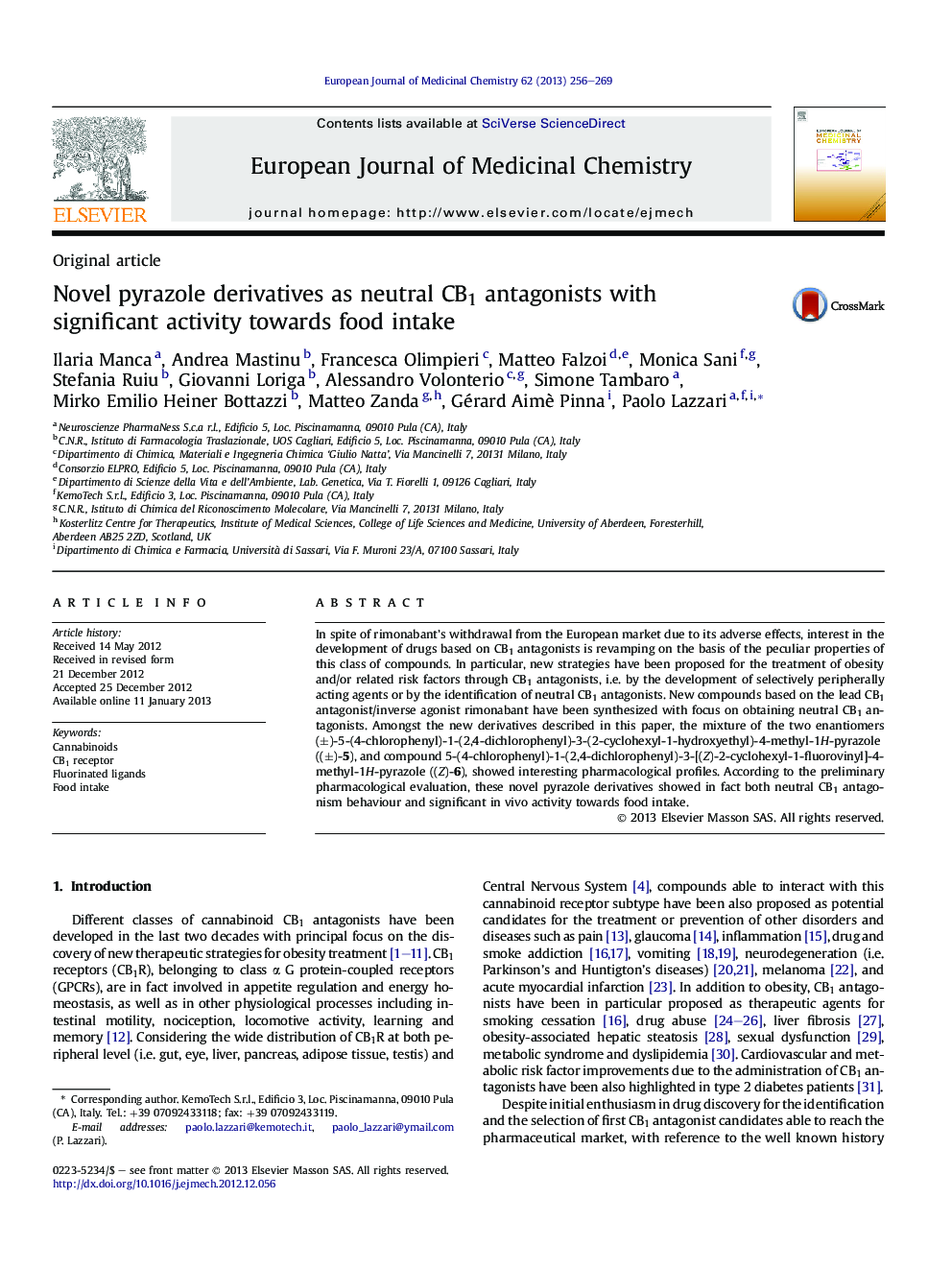| Article ID | Journal | Published Year | Pages | File Type |
|---|---|---|---|---|
| 1394302 | European Journal of Medicinal Chemistry | 2013 | 14 Pages |
In spite of rimonabant's withdrawal from the European market due to its adverse effects, interest in the development of drugs based on CB1 antagonists is revamping on the basis of the peculiar properties of this class of compounds. In particular, new strategies have been proposed for the treatment of obesity and/or related risk factors through CB1 antagonists, i.e. by the development of selectively peripherally acting agents or by the identification of neutral CB1 antagonists. New compounds based on the lead CB1 antagonist/inverse agonist rimonabant have been synthesized with focus on obtaining neutral CB1 antagonists. Amongst the new derivatives described in this paper, the mixture of the two enantiomers (±)-5-(4-chlorophenyl)-1-(2,4-dichlorophenyl)-3-(2-cyclohexyl-1-hydroxyethyl)-4-methyl-1H-pyrazole ((±)-5), and compound 5-(4-chlorophenyl)-1-(2,4-dichlorophenyl)-3-[(Z)-2-cyclohexyl-1-fluorovinyl]-4-methyl-1H-pyrazole ((Z)-6), showed interesting pharmacological profiles. According to the preliminary pharmacological evaluation, these novel pyrazole derivatives showed in fact both neutral CB1 antagonism behaviour and significant in vivo activity towards food intake.
Graphical abstractFigure optionsDownload full-size imageDownload as PowerPoint slideHighlights► Renew the importance of drugs based on CB1 antagonists. ► Fluorinated compounds based on the lead rimonabant have been synthesized. ► Novel pyrazole derivatives showed neutral CB1 antagonism behaviour. ► Compounds ±-5 and Z-6 have significant in vivo activity towards food intake.
